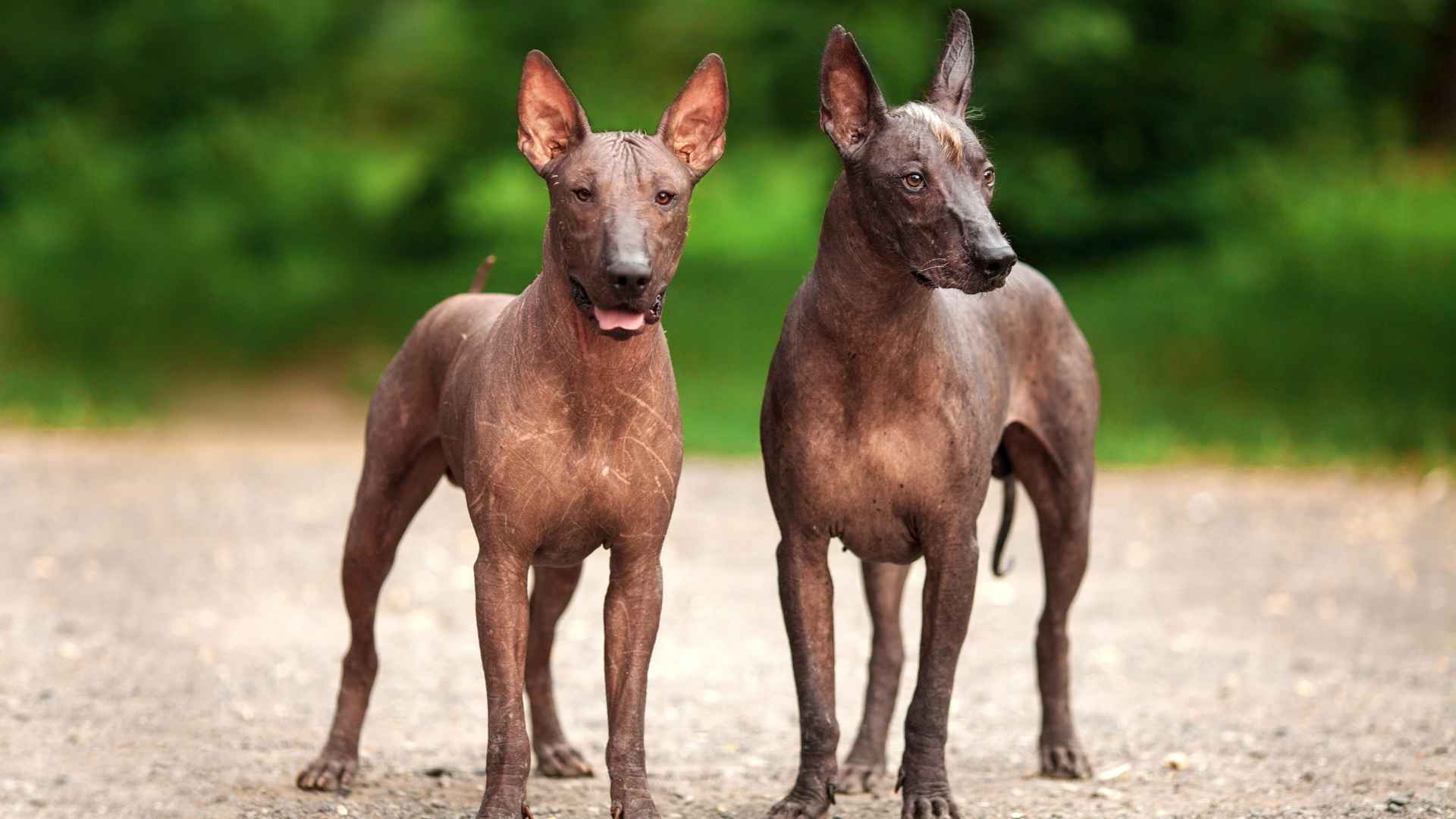If you’ve ever seen a dog without fur, you’ve likely done a double-take—and for good reason. Hairless dog breeds stand out with their sleek skin, expressive features, and one-of-a-kind charm.
While these pups might not have a traditional fur coat, they more than make up for it with their affectionate personalities and loyal nature. Whether it’s their smooth skin, lack of shedding, or the novelty of their look, many dog lovers are drawn to hairless dogs for both practical and aesthetic reasons.
In fact, as many as 15-30% of people experience allergic reactions to cats and dogs, which is one reason hairless dog breeds are often considered by those looking for allergy-friendly companions.
Ready to meet some incredible dog breeds that break the furry mold? Let’s explore some hairless dog breeds that feature unique hairless spots—each with their own history, personality, and care needs.
Dog Breeds With Unique Hairless Spots
1. American Hairless Terrier
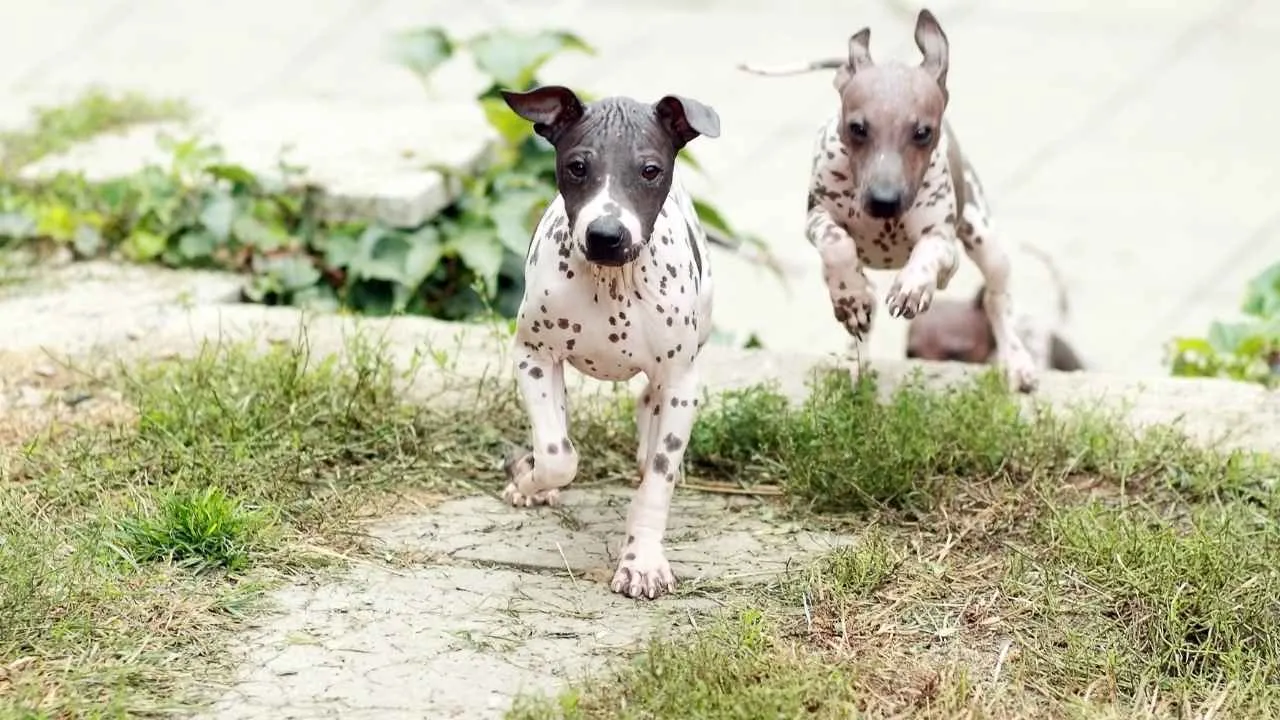
History: The American Hairless Terrier is a Louisiana native. It descended from the rat terrier in the 1970s when breeders selectively bred a hairless puppy born to coated parents.
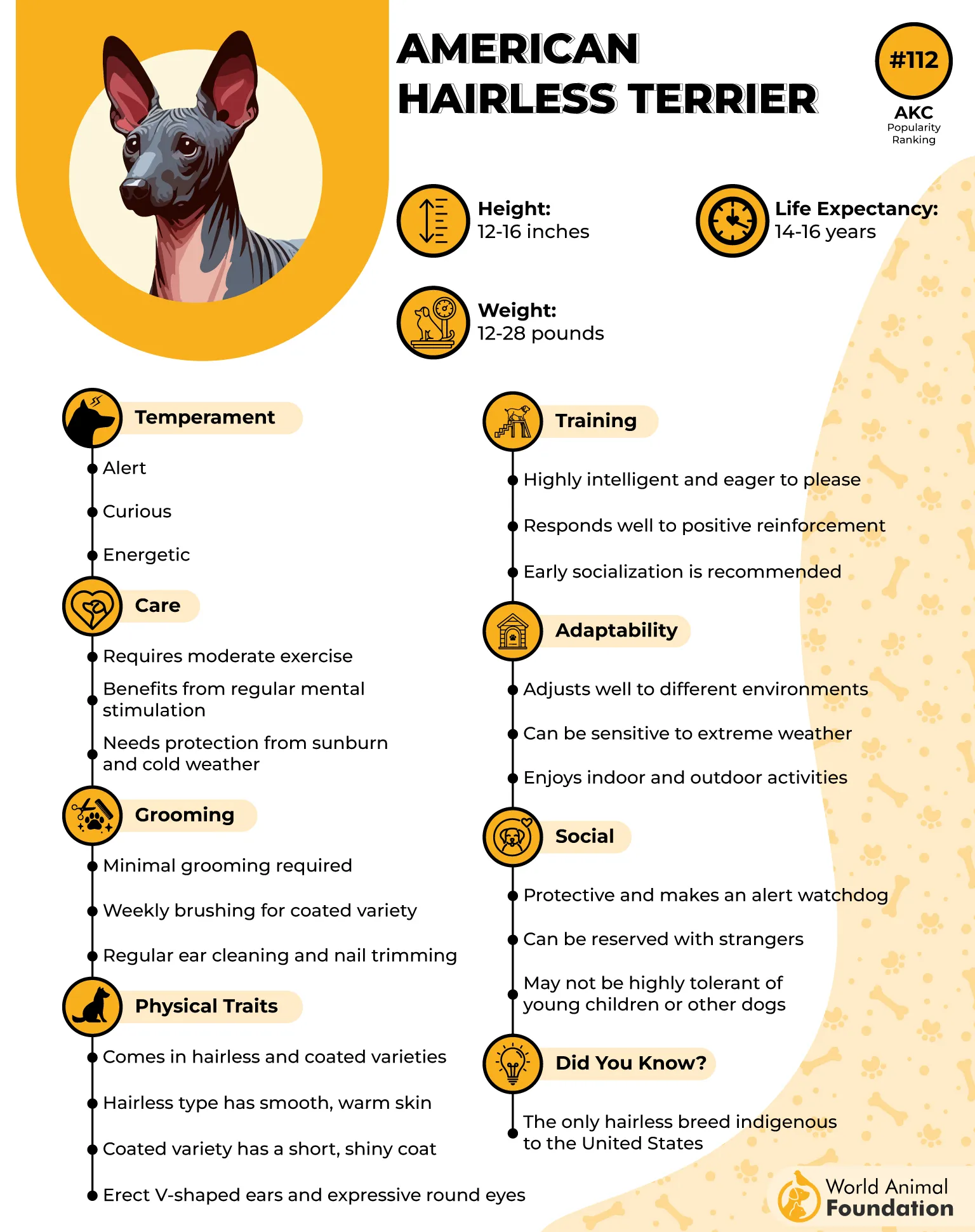
Appearance: This only hairless breed in the AKC terrier group has smooth skin and a compact, muscular body. American Hairless Terriers come in a wide range of colors, including black, chocolate, lilac, and apricot, often with striking patterns like pink and grey or white and black.
Most are completely hairless, though some may have a short, fine fur coat. They usually retain eyebrows and whiskers.
Personality & Temperament: AHTs are active, intelligent, and playful. They love digging, chasing small rodents, and cuddling with their humans. This hairless dog breed thrives on companionship and regular activity.
2. Peruvian Inca Orchid
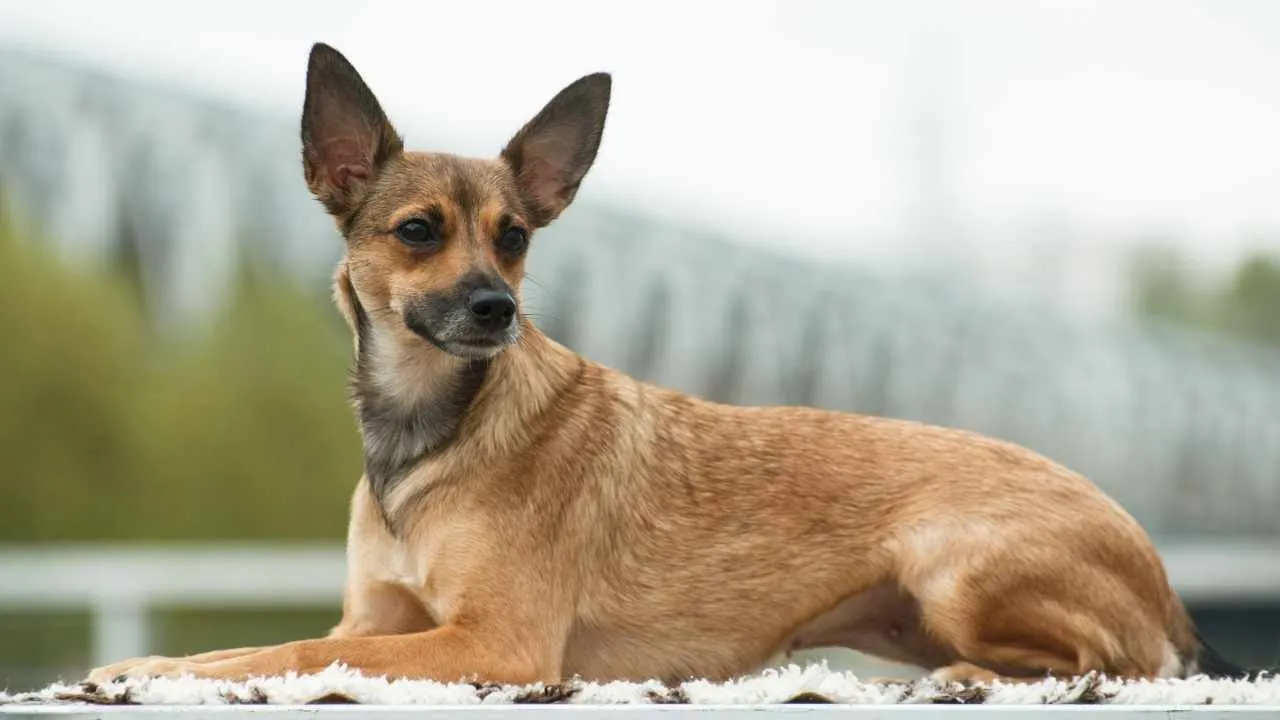
History: The Peruvian Inca Orchid is an ancient breed and the national dog of Peru. It dates back to the Incan Empire and was believed to have healing powers. The breed was rediscovered in the Andes in 1966 and officially protected by the Peruvian government in 2001.
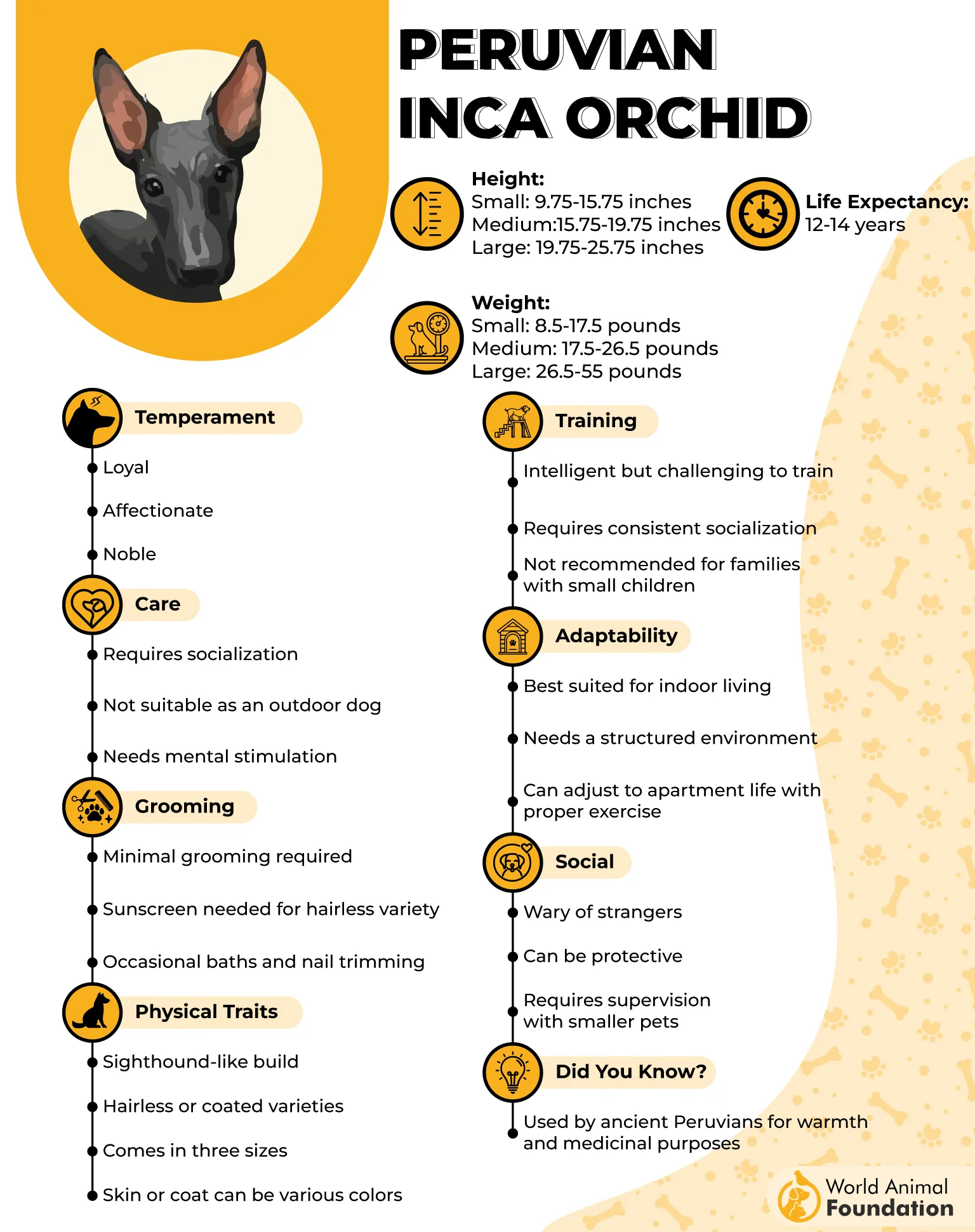
Appearance: Also known as the Peruvian hairless, this breed usually appears completely hairless, though some may have tufts of hair on the head, tail, and feet.
They have a slim, graceful build, with smooth skin that can be solid or mottled in shades like copper, gray, or brown. AKC states that the PIOs come in three sizes: small, medium, and large.
Personality & Temperament: Peruvian Inca Orchids are affectionate, loyal, and tend to bond closely with one person. They can be reserved with strangers and may suffer from separation anxiety. These hairless dogs are athletic, energetic, and need regular exercise to stay happy and healthy.
3. Xoloitzcuintli
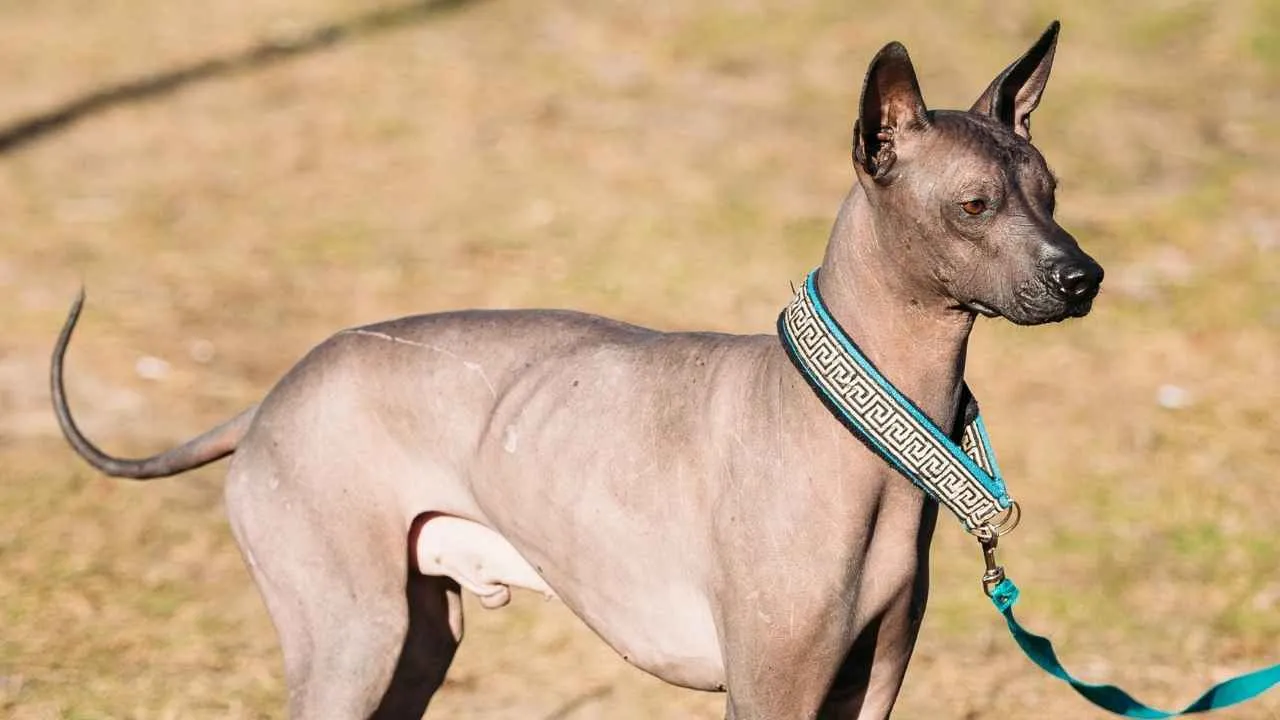
History: The Xoloitzcuintli, or Mexican hairless dog, is one of the oldest dog breeds that dates back to Aztec times. The ancient Xolo was believed to guide souls in the afterlife.
Though once nearly extinct, it was rediscovered in the 1950s and revived. Today, it is the official dog of Mexico and a living national treasure.
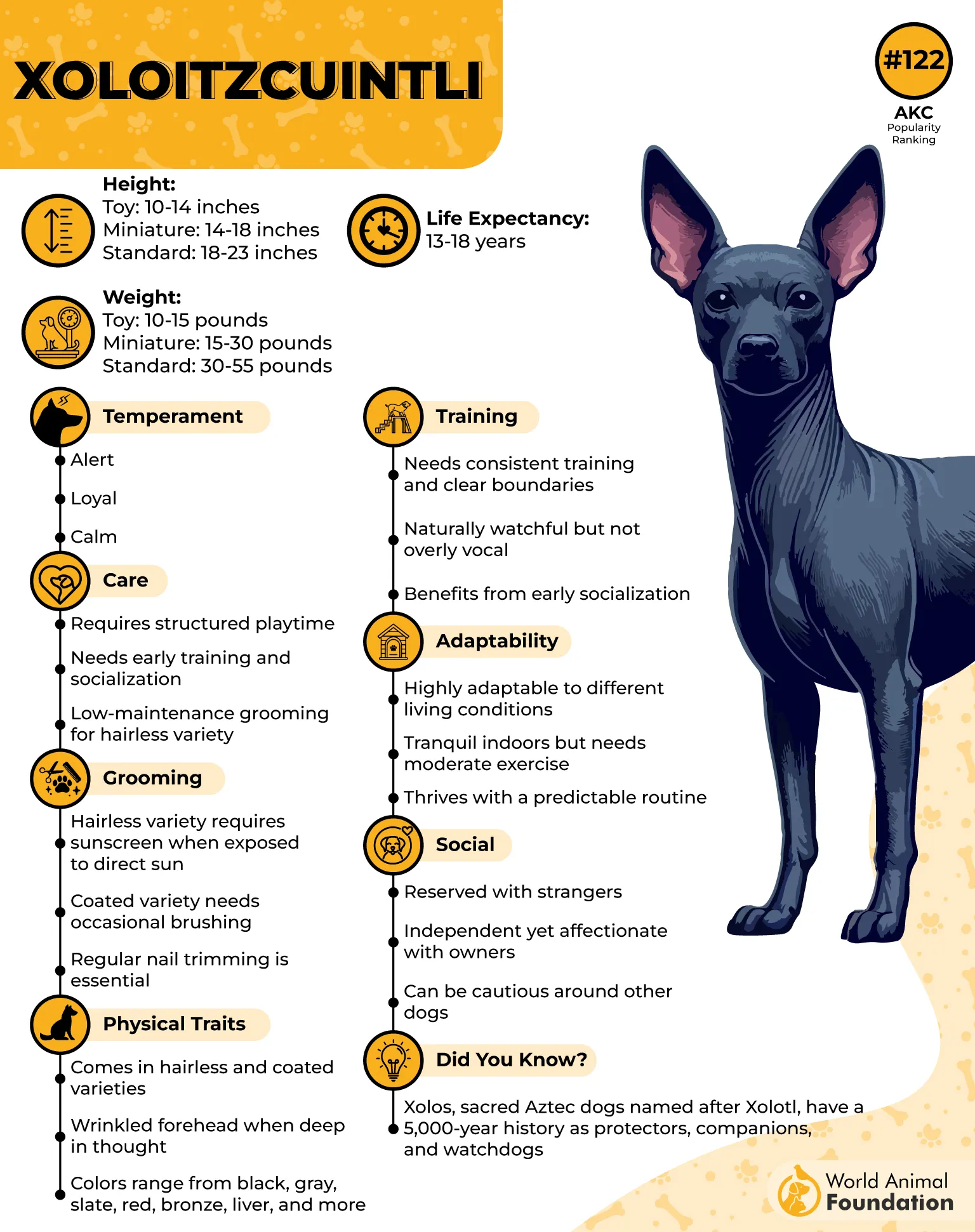
Appearance: Xolos come in two coat varieties—hairless and coated. The hairless variety has smooth skin and a muscular, statue-like build, often compared to onyx or marble. They come in three sizes: toy, miniature, and standard, and range from 10 to 55 pounds.
Personality & Temperament: These hairless dogs are deeply devoted, intelligent, and calm. They make loyal companions and excellent watchdogs. Xolos bond closely with their families and benefit from early socialization and consistent care.
4. Argentine Pila Dog
History: The Argentine Pila Dog is a rare breed believed to have originated over 3,000 years ago during the Incan Empire. Closely related to the Peruvian Inca Orchid, this hairless breed is native to Argentina and is still found mostly in its homeland.
Appearance: Argentine Pilas are typically completely hairless, though some may have tufts of hair on the head and tail. They come in three sizes—small, medium, and large—and feature smooth skin that may be black, gray, or brown. Coated and hairless puppies can appear in the same litter.
Personality & Temperament: These hairless dogs are affectionate, playful, and quick to adapt to new environments. They’re good with kids and other dogs, and their silky fur-free bodies make them cuddly companions, though they require special care to avoid skin infections.
5. Hairless Khala
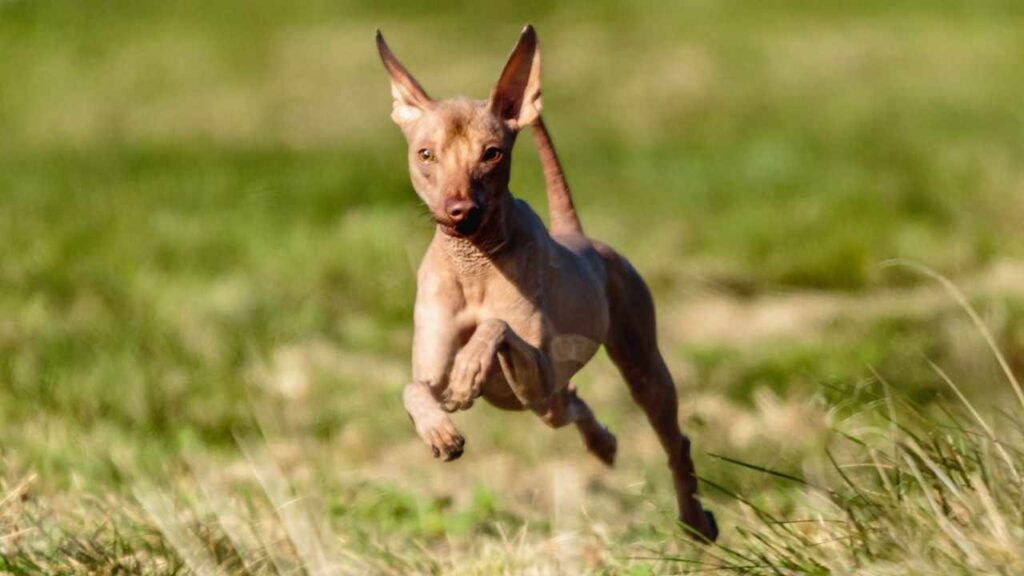
History: The Hairless Khala, also known as the Bolivian hairless dog, is a rare breed from Bolivia. This breed shares ancestry with many hairless dogs of South America and has been treasured in its native region for generations.
Appearance: Hairless Khalas have dark gray skin and a distinctive tuft of long hair on their heads. They come in two sizes: medio (short-legged) and grande (long-legged), and often have a lean, agile build.
Personality & Temperament: These four-legged friends are loyal and protective of their families. They tend to be shy with strangers and benefit from early socialization.
Hairless Khalas need daily exercise, and due to their bare skin, may require protective clothing when temperatures drop. Owners must keep their skin clean and watch for potential skin conditions.
6. Abyssinian Sand Terrier
History: The Abyssinian Sand Terrier, also called the African hairless dog, is an extremely rare hairless dog breed from Africa. It may even be extinct, with the last verified record dating back to 1903.
Appearance: These sleek, small to medium dogs may be completely hairless or have tufts of hair on the head and tail. Their skin varies in color—gray, sand, black, or bronze—and may show mottled patterns. They are known for their long muzzles and large, upright ears.
Personality & Temperament: These dogs are loyal and protective, with a calm temperament at home. They make excellent companions for active owners due to their high energy.
They crave attention and need regular baths with lukewarm water to avoid skin issues, flaky areas, and maintain overall health. Owners must be committed to caring for hairless dogs properly.
7. Chinese Crested
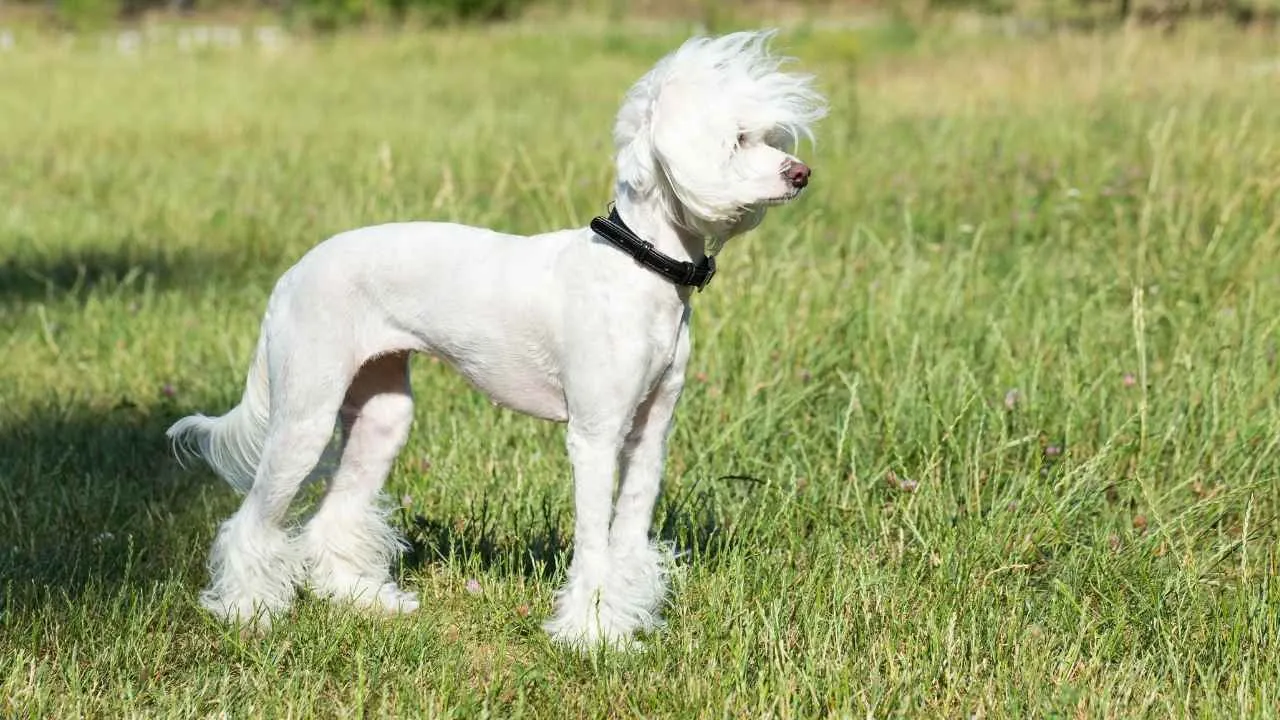
History: As per Purina, the exact origins of the Chinese Crested are uncertain and widely debated. It’s believed that their ancestors came from Africa and later made their way to Asia.
They were commonly kept as ship dogs by sailors, who used them to control vermin and eventually introduced them to ports across the Americas.
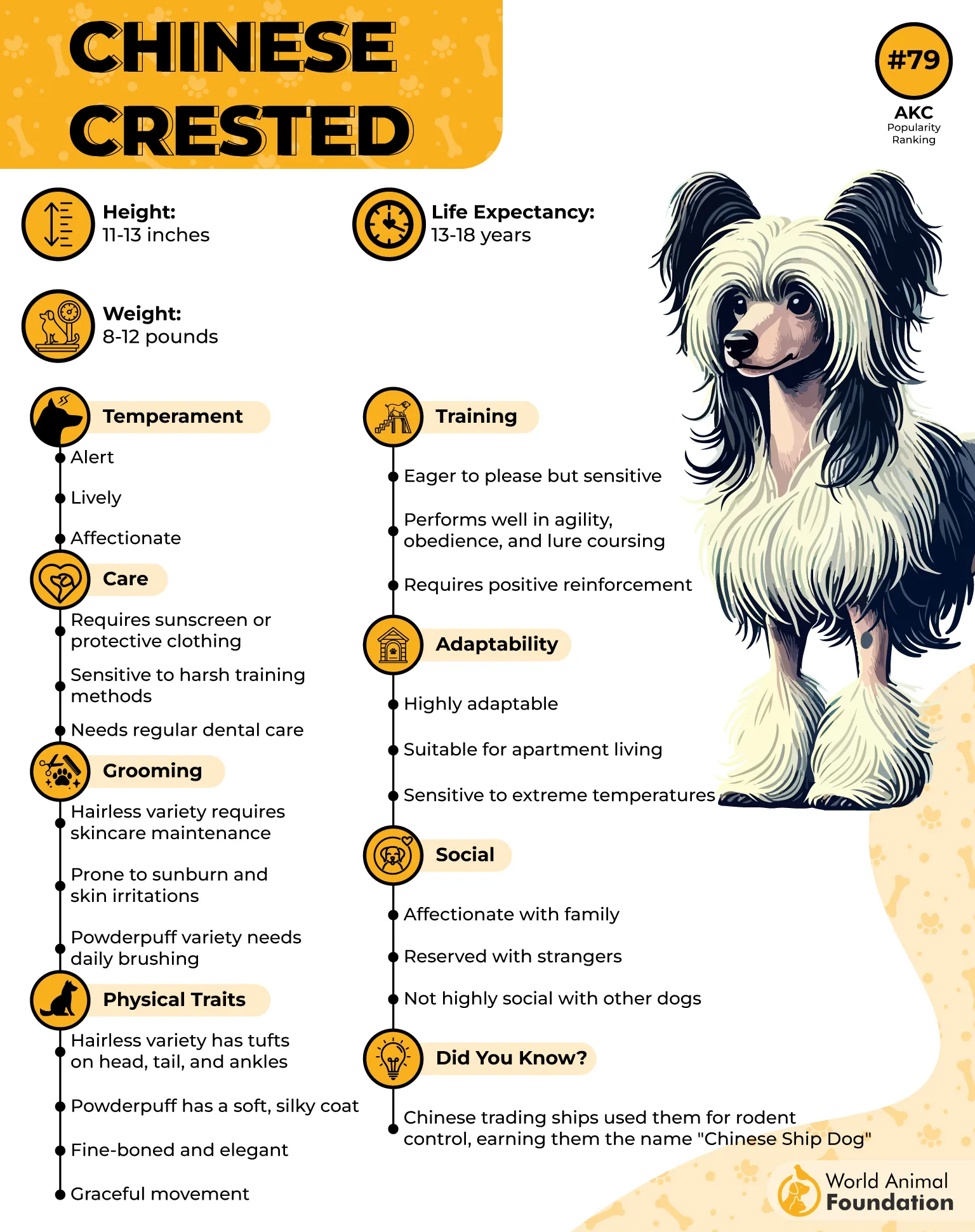
Appearance: This elegant breed comes in two types: hairless and powderpuff. The hairless variety has smooth skin with tufts of hair on the head, paws, and tail. The powderpuff has a long, soft double coat. Both types may appear in the same litter.
The furry counterparts require grooming to prevent tangles, while the hairless ones need a different care routine and protection from skin cancer.
Personality & Temperament: Despite their delicate look, Chinese Cresteds are playful, active, and love being outside. These small dogs enjoy cuddles to keep them warm and can excel in agility sports. They may seem dainty, but are far from wild—they’re affectionate and thrive with close human contact.
8. Jonangi
History: The Jonangi is a hairless breed native to southern India. Once common along coastal regions and used for herding and hunting, the breed has become rare. Many were left to live in semi-wild conditions, with some even adapting to fish for food.
Appearance: Jonangis are typically hairless or have a very short, smooth coat that’s nearly invisible, leaving their skin exposed to the elements.
They come in various colors like black, brindle, white, and grey, often with spotted patterns. These dogs have muscular builds, short muzzles, curled tails, and distinctive wrinkled foreheads.
Personality & Temperament: Jonangis are loving and loyal to their families but cautious around strangers. They are prone to dry spots and need proper care to protect their skin. Known for their agility and herding skills, they don’t bark but yodel, adding to their uniqueness as companions.
9. Ecuadorian Hairless Dog
History: The Ecuadorian Hairless Dog is one of the rarest breeds in the world, originating from Ecuador’s Santa Elena Peninsula. Likely descended from the Peruvian Inca Orchid or Xolo, this ancient breed has nearly vanished from public records and is largely unknown outside its native region.
Appearance: These dogs have slender, elegant builds with long legs and short tails. Their skin is typically greyish-brown and may appear golden under the setting sun. They usually have sparse, reddish hair on the head or tail, often splotchy or scattered.
Personality & Temperament: Ecuadorian Hairless Dogs are agile, alert, and deeply loyal. While they are affectionate with their families, their strong prey drive means they may not be ideal for homes with small animals. They need plenty of physical and mental stimulation to stay happy and well-behaved.
Conclusion
Hairless dog breeds are truly one-of-a-kind, offering a unique blend of beauty, loyalty, and companionship. From their ancient roots to their modern-day charm, these dogs stand out, not just for their looks, but also for their affectionate and devoted nature. Whether completely hairless or with unique hairless spots, they bring personality and warmth into any home.
While they may skip the shedding, hairless dogs do require a different care routine to keep their skin healthy and protected. From managing dry spots to providing protective clothing when temperatures drop, owning one of these special breeds means committing to thoughtful care. But for the right family, these four-legged friends are as rewarding as they are rare.


